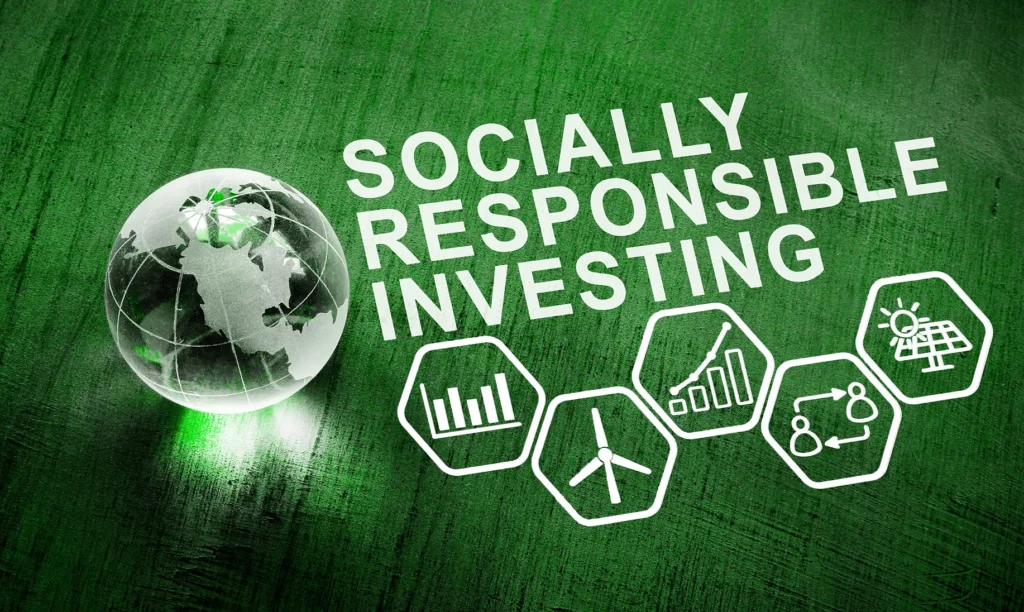In today’s financial world, many investors are looking for ways to align their portfolios with their personal values. Socially Responsible Investing (SRI) offers an opportunity to do just that, allowing individuals to invest in companies and funds that prioritize environmental, social, and governance (ESG) factors. This article will provide an introduction to Socially Responsible Investing, explore its principles, and explain how you can incorporate SRI into your investment strategy.
1. What is Socially Responsible Investing?
At its core, Socially Responsible Investing refers to the practice of selecting investments based on both financial return and social good. Investors who choose SRI often seek to promote positive societal change by investing in businesses that have a positive impact on society and the environment. Socially Responsible Investing includes considerations like sustainability, ethical business practices, and social justice.
2. The History of Socially Responsible Investing
Socially Responsible Investing has evolved over the years. Initially, it began with exclusionary practices, where investors avoided companies that were involved in activities like tobacco, alcohol, or weapons production. Today, however, SRI has expanded to include positive screening, where investors specifically target companies that contribute to environmental sustainability, community development, and social justice.
3. Key Principles of Socially Responsible Investing
When it comes to Socially Responsible Investing, there are three core principles:
- Environmental Impact: Investing in companies that prioritize sustainable practices and work toward reducing their carbon footprint.
- Social Responsibility: Focusing on businesses that support fair labor practices, human rights, and community development.
- Governance: Choosing companies that have transparent governance, ethical leadership, and a commitment to preventing corruption.
4. How to Start with Socially Responsible Investing
For those new to the concept, starting with Socially Responsible Investing can seem daunting. However, it is quite simple to integrate SRI strategies into your portfolio. Here are a few steps to consider:
- Research ESG Ratings: Many companies provide ESG ratings that give insight into how socially responsible they are. These ratings can help guide your investment choices.
- Choose SRI Mutual Funds or ETFs: If you prefer a diversified portfolio, consider investing in funds that focus on socially responsible companies.
- Align Your Investments with Your Values: Think about the causes you care most about, such as renewable energy, social justice, or sustainable agriculture, and seek out investments that align with these issues.
5. The Benefits of Socially Responsible Investing
Socially Responsible Investing offers a variety of benefits, including:
- Impactful Change: By choosing investments that align with your values, you can support companies that are actively making a positive impact on the world.
- Long-Term Growth: Many studies show that companies with strong ESG practices often perform better financially in the long run, offering both ethical and financial returns.
- Diversification: SRI can also help diversify your portfolio, as it focuses on companies across various sectors and industries that meet ESG criteria.
6. Challenges of Socially Responsible Investing
While Socially Responsible Investing has many benefits, there are also challenges. One common concern is the potential for lower financial returns, though studies have shown that SRI funds often perform on par with or better than traditional investments. Another challenge is the complexity of evaluating companies based on ESG criteria, as these factors can be subjective.
7. Socially Responsible Investing vs. Impact Investing
While both Socially Responsible Investing and impact investing focus on using financial capital to achieve social good, they differ in their approach. Impact investing is usually more targeted and focuses on investments that have a direct, measurable impact, such as funding renewable energy projects or supporting affordable housing.
8. The Future of Socially Responsible Investing
The future of Socially Responsible Investing looks bright as more investors become aware of the importance of aligning their investments with their values. As ESG criteria become more standardized and accessible, it is expected that SRI will continue to grow in popularity. Moreover, more companies are adopting sustainable and ethical practices, making it easier for investors to find socially responsible options.
Conclusion
Socially Responsible Investing offers a meaningful way to make a difference in the world while generating returns. By aligning your investment portfolio with your personal values, you can not only promote positive societal change but also build wealth. As the demand for ethical investments continues to rise, now is the perfect time to consider Socially Responsible Investing as part of your investment strategy.

